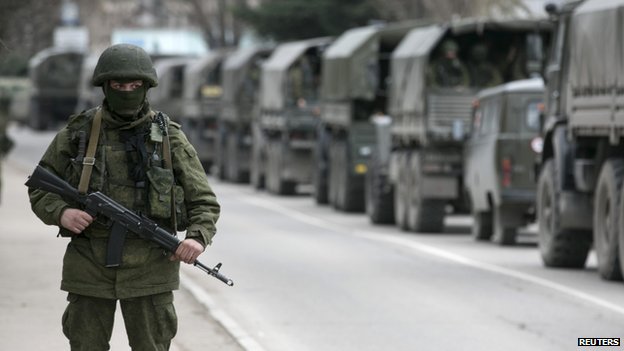Seventy-four years ago, Joseph Stalin deported the Crimean Tatars from their historical homeland, an action that cost nearly 200,000 lives at the time, set the stage for Vladimir Putin’s Anschluss of the Ukrainian peninsula, and continues in the form of a Russian genocide against that nation.
On May 18, Crimean Tatars in their occupied homeland and around the world and their supporters in Ukraine and again around the world are pausing to remember the events of 1944 that almost three years ago, the Ukrainian government recognized as an act of genocide
and called on the rest of the world to do the same.
But in remembering that singular horrific act, it is equally important to take note of the fact that Moscow is continuing it. As the Ukrainian foreign minister put it today,
Others have echoed similar views – see Ukrainian historian Serhii Gromenko’s article in today’s Delovaya stolitsa
. But the author of these lines would like to share one often neglected action in 1944 that the Russian occupiers have threatened to repeat.
When the NKVD rounded up the Crimean Tatars and loaded them onto box cars for deportation to the wilds of Central Asia, the officers in Stalin’s secret police missed those who were living in three coastal villages. That presented a problem: if they reported their mistake, they’d be exiled as well, and if they shot those people, they’d have to account for the bullets.
So, Stalin’s NKVD detachments on the ground came up with a horrific “solution.” They loaded up the Crimean Tatars in these three villages onto garbage scows and had them pulled out into the deep waters of the Black Sea.
That outrageous crime was reported in the mid-1950s by the Munich Institute for the Study of the USSR in its book on Soviet genocides. When I recalled that at a graduate seminar at the University of Chicago in the early 1970s, my professor said that as bad as the Soviets may have been, they couldn’t have acted as barbarically as that.
Unfortunately, he was wrong. In 1990, Mikhail Guboglo of the Moscow Institute of Ethnology and Anthropology
published a chronology on the history of the Crimean Tatars and included an archivally-based note that what the Munich institute and then I had said had in fact taken place.
But confirmation of that crime has come even more recently: In 2016, following Putin’s illegal occupation of Crimea, one of his henchmen there threatened the Crimean Tatars with the same fate that caught up the residents of the three villages in 1944 if they continued to resist.
So far as I am aware, he hasn’t acted on that threat; but the fact that he felt free to make it is emblematic of the Putinist approach to the Crimean Tatars, a long-suffering people who deserve far better than they have received from Moscow be it under Stalin in 1944 or under Putin now.
Read More:
- Haytarma: the film about Stalin’s deportation of the Crimean Tatars Russia doesn’t want you to see | Watch online
- Deportation, genocide, and Russia’s war against Crimean Tatars
- Chronology of the annexation of Crimea
- Russian occupier of Crimea threatens to repeat one of Stalin’s most barbaric acts in 1944
- Crimean jailed for Ukrainian flag announces termless hunger strike
- The Crimean Tatar Palace and other historic sites Russia is destroying in occupied Crimea
- Moscow forming ‘death squads’ in occupied Crimea and elsewhere, Shmulyevich says
- Four years after annexation: Ukraine still connected with occupied Crimea, albeit weakly
- Little green men: the annexation of Crimea as an emblem of pro-Kremlin disinformation
- The attack on media freedom in Crimea threatens to stop coverage of rights abuses
- Tatar political prisoner: I will continue to denounce Russia’s criminal government





